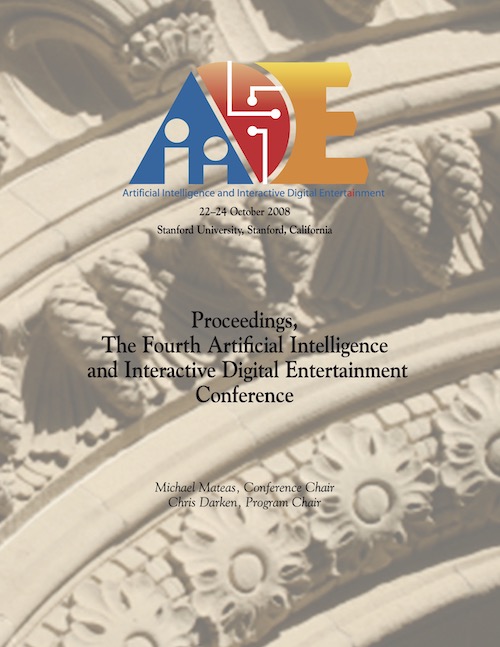Automatically-Generated Convex Region Decomposition for Real-Time Spatial Agent Navigation in Virtual Worlds
DOI:
https://doi.org/10.1609/aiide.v4i1.18693Abstract
This paper presents a new method for decomposing environments of complex geometry into a navigation mesh represented by bounding geometry and a connectivity graph for real-time agent usage in virtual worlds. This is accomplished by the generation of a well-defined and high-coverage set of convex navigable regions and the connected gateways between them. The focus of this paper is a new automated algorithm developed for decomposing a 2D representation of world-space into arbitrary sided high-order polygons. The DEACCON (Decomposition of Environments for the Creation of Convex-region Navigation-meshes) algorithm works by seeding a 2D polygonal representation of world-space with a series of quads. Each quad is then provided with the opportunity to grow to its maximum extent before encountering an obstruction. DEACCON implements an automatic subdividing system to convert quads into higher-order polygons while still maintaining the convex property. This allows for the generation of navigation meshes with high degrees of coverage while still allowing the use of large navigation regions, providing for easier agent navigation in virtual worlds. Compared to the Space-filling Volumes and Hertel-Mehlhorn navigation mesh decomposition methods, DEACCON provides more complete coverage, controllable mesh sizes, and better overall algorithmic control to desired decomposition quality with an improvement in agent navigation speed due to better decompositions.

